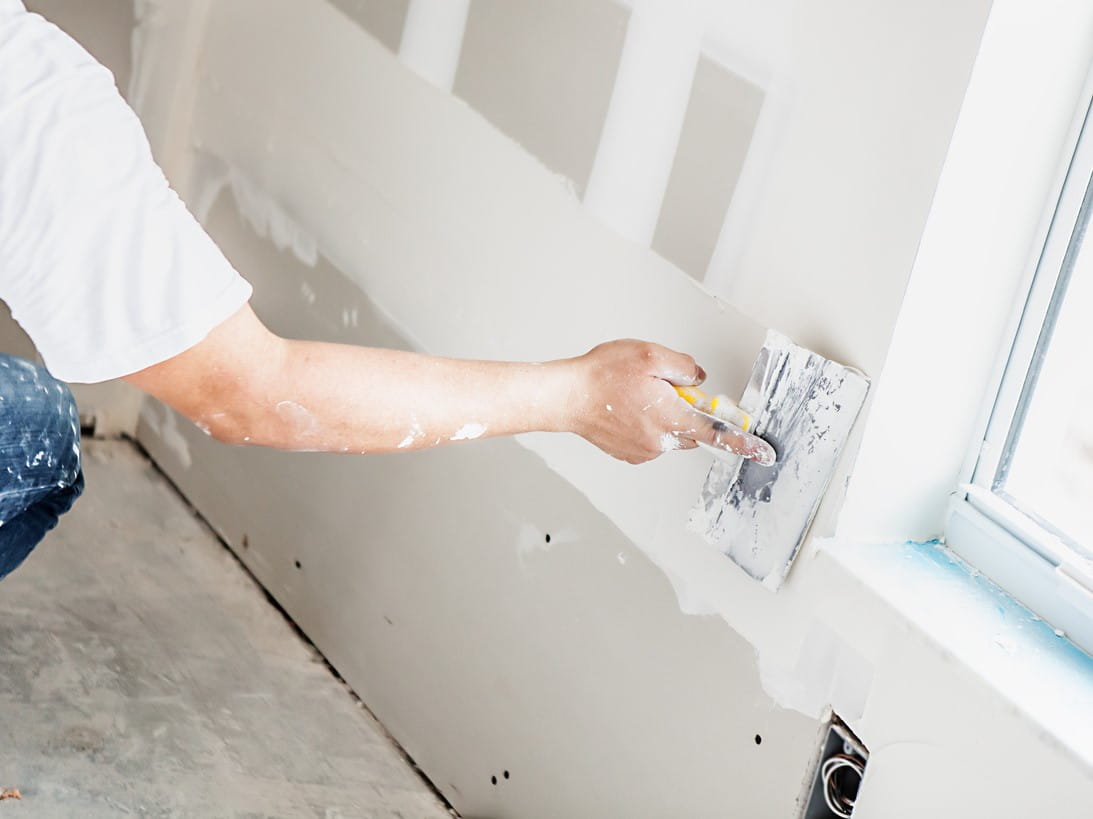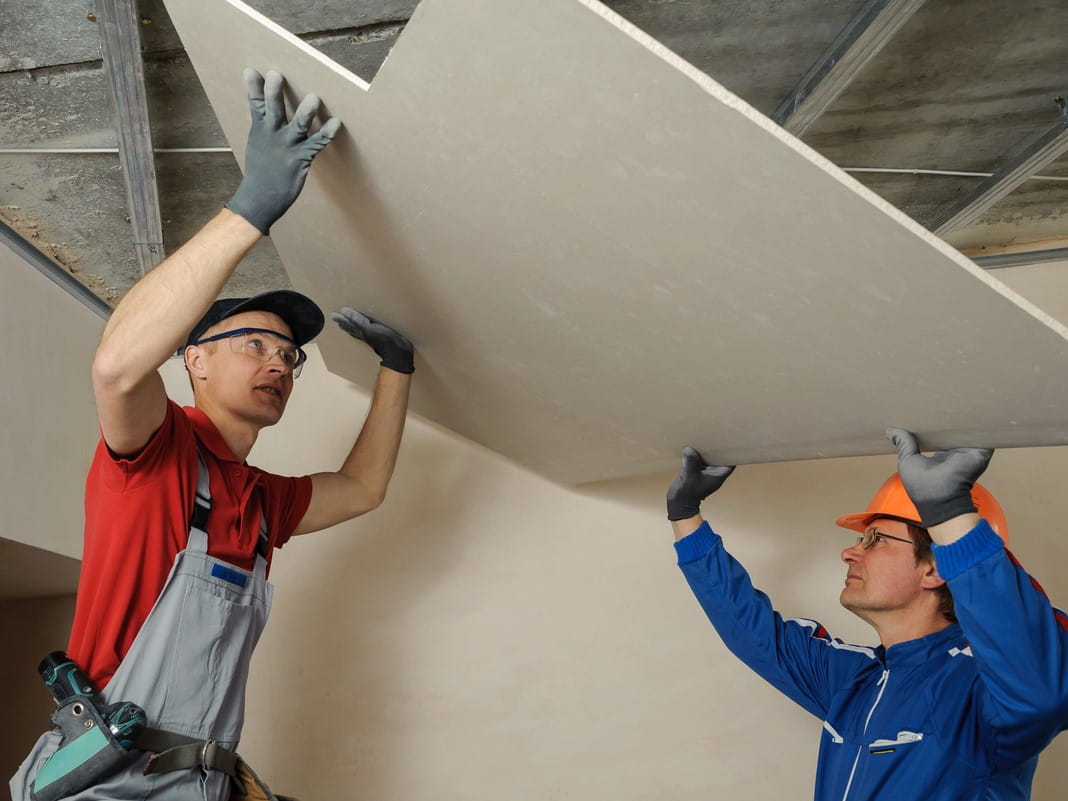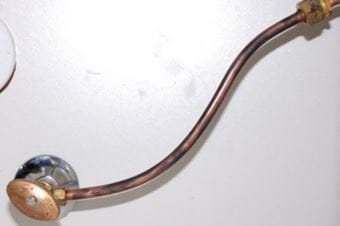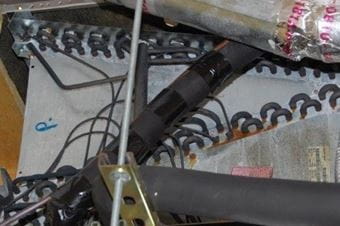When Is Drywall a Problem?

The Bottom Line
While there have been concerns about contaminated drywall emitting sulfurous gases, there is little evidence to show that uncontaminated drywall is linked to serious health risks.

The Full Story
Drywall (gypsum board) is used in North American construction as a faster alternative to plaster and wood. Drywall is made of gypsum (calcium sulfate dihydrate), paper, and additives such as mica, clay, and resin. Drywall installation generates gypsum and silica dust, which are irritating to the lungs. Workers should wear personal protective equipment such as safety glasses, gloves, and dust masks when handling drywall. Drywall that has been damaged by water loses its strength and can grow mold.
After very active hurricane seasons in 2004 and 2005, there was a shortage of US-made drywall due to new home construction and rebuilding. Some suppliers increased their importation of drywall from China to meet the demand. Unfortunately, some of the imported drywall was contaminated with toxic chemicals. In 2008, homeowners in Florida began reporting upper respiratory irritation in their recently built homes. Many reported a decrease in symptoms when they left their homes and recurrence of symptoms upon returning. Reported symptoms included headaches, irritated and itchy eyes and skin, difficulty breathing, persistent cough, runny nose, sinus infections and congestion, sore throats, frequent nosebleeds, and asthma attacks.
Some residents reported a strong sulfur smell and premature corrosion or deterioration of certain metals (especially copper) in their homes such as air conditioner coils and electrical wiring. Not all of the homes with problem drywall contained drywall manufactured in China. Some problem homes contained drywall manufactured in North America and some had drywall with no indication of origin. "Problem drywall" refers to all affected drywall regardless of its country of origin.
The United States Consumer Product Safety Commission (CPSC) defines "problem drywall" as meeting these criteria:
Step One: A visual inspection must show blackening of copper electrical wire or air conditioning evaporator coils AND drywall installed between 2001 and 2009.
Step Two: Drywall installed between 2005 and 2009 must have at least two of the below. For installations between 2001 and 2004, at least four of the following conditions must be met (* indicates lab testing required):
- Elemental sulfur in the drywall core*
- Black copper sulfide on labels, grounding wires, and/or air conditioning coils*
- Chinese markings on drywall
- Elevated sulfide gas emissions from drywall*
- Corrosion induced by drywall in test chambers*
In late 2009, CPSC concluded that there was a "strong association" between Chinese drywall and corrosion of pipes and wires reported by thousands of homeowners in the US. The issue was addressed in 2011, and now all drywall must be tested for volatile sulfur before it can be sold in the US.
 |
 |
| The copper pipe is blackened (photo from CPSC) |
Air conditioner copper coils blackened and corroded (photo from CPSC) |
If Drywall Is Swallowed or Gets in the Eyes
If you suspect someone has swallowed drywall, do not make the person vomit. Immediately check the webPOISONCONTROL® online tool for guidance or call Poison Control at 1-800-222-1222.
When drywall dust gets in the eyes, minor irritation, redness, or a scratch on the surface of the eye can occur. Serious eye injury is not likely, but the eyes should be rinsed immediately. Remove contact lenses and use lots of room temperature water. For children, pour water onto the bridge of the nose and let it gently run into the eyes. Encourage blinking. After rinsing, use webPOISONCONTROL for help online, or call Poison Control at 1-800-222-1222.
Mary Elizabeth May, RN, BA, MPH
Certified Specialist in Poison Information
Poisoned?
Call 1-800-222-1222 or
Prevention Tips
- Always wear safety glasses, gloves, and a dust mask when working with drywall.
- Choose domestic drywall. Regulations in the US maintain minimum safety standards for gypsum board.
- Consider mold-resistant drywall; it substitutes a fiberglass mat for the paper facing used in traditional drywall.
- Green board is often used in bathrooms and showers as a mold-preventative building material. Although it is less effective at preventing mold than mold-resistant drywall, it is usually less expensive.
This Really Happened
Case 1: A 10-month-old girl was in a walker in her home while drywall was being installed. Her mother saw that the girl had drywall dust on her hands and called Poison Control. Following Poison Control’s instructions, she gave the child a bath and something to eat and drink. The child then vomited up a small piece of drywall. She tolerated oral fluids afterward and was fine when Poison Control checked back the following day.
Case 2: A 3-year-old boy pulled a towel rack off the wall and got drywall dust in his eyes and possibly his mouth. His mother called Poison Control, which advised her to flush his eyes and give him something to drink, which she did. When Poison Control checked back with his mother later that day, the boy was not having any symptoms.
For More Information
How can I tell if my home has problem drywall? [internet]. Washington DC: US Consumer Products Safety Commission. 2009 [accessed May 26, 2017].References
Methner MM. Identification of potential hazards associated with new residential construction. Appl Occup Environ Hyg 2000;15:189-92.Poisoned?
Call 1-800-222-1222 or
Prevention Tips
- Always wear safety glasses, gloves, and a dust mask when working with drywall.
- Choose domestic drywall. Regulations in the US maintain minimum safety standards for gypsum board.
- Consider mold-resistant drywall; it substitutes a fiberglass mat for the paper facing used in traditional drywall.
- Green board is often used in bathrooms and showers as a mold-preventative building material. Although it is less effective at preventing mold than mold-resistant drywall, it is usually less expensive.
This Really Happened
Case 1: A 10-month-old girl was in a walker in her home while drywall was being installed. Her mother saw that the girl had drywall dust on her hands and called Poison Control. Following Poison Control’s instructions, she gave the child a bath and something to eat and drink. The child then vomited up a small piece of drywall. She tolerated oral fluids afterward and was fine when Poison Control checked back the following day.
Case 2: A 3-year-old boy pulled a towel rack off the wall and got drywall dust in his eyes and possibly his mouth. His mother called Poison Control, which advised her to flush his eyes and give him something to drink, which she did. When Poison Control checked back with his mother later that day, the boy was not having any symptoms.
